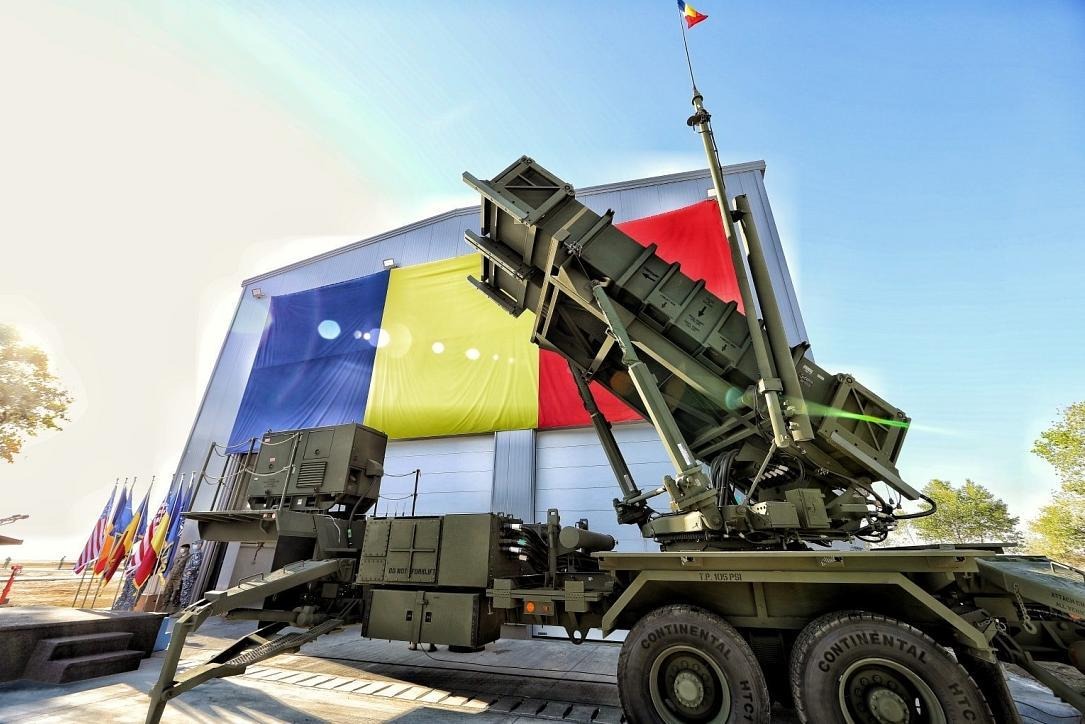
Ukraine Expands Its Missile Capabilities
Ukraine Expands Its Missile Capabilities
Ukraine’s military and political authorities continue to seek an adequate deterrent to contain and deter Russian aggression, particularly in light of the breakdown of the 1987 Intermediate-Range Nuclear Forces (INF) Treaty. In response to Washington’s and Moscow’s stated intention, earlier this year, to withdraw from the INF (see EDM, February 4; Kremlin.ru, March 4), the Ukrainian Ministry of Foreign Affairs declared that Kyiv “reserves the right to develop weapons systems deemed necessary to defend itself, including, inter alia, missiles and associated launcher systems” (Mfa.gov.ua March 7). And in a speech delivered two days later, Ukrainian President Petro Poroshenko said, “Ukraine will have to develop extended-range missiles since the INF Treaty is no longer valid. We had abided by the restrictions imposed on us by the INF Treaty. But Russia has destroyed the treaty by creating new threats to European security” (Ukrinform, March 9).
Kyiv’s declarations should not be interpreted as the start of a program to produce nuclear warheads or even necessarily intermediate-range missiles. The political and even economic gains from such an undertaking would be questionable at best. Moreover, Ukraine remains hampered in implementing either such project due to the difficult economic situation in the country. Finally, Ukraine does not have enough time or all the necessary technical capabilities to move forward on advanced, longer-range missile technology at present. As a result, Kyiv is instead meeting its regional security challenges by intensively developing three key weapons projects—the Vilkha/Vilkha-M missile complex, the Neptun cruise missile, and the Hrim-2 (Sapsan) short-range ballistic missile (see EDM, March 25). Early April 2019 marked an important milestone for the implementation of two of these three projects.
The Vilkha-M system represents the next generation of the Vilkha multiple-launch rocket system (MLRS), already recently adopted by the Armed Forces of Ukraine. On April 4, the Vilkha-М MLRS was successfully test fired in Odesa Region (Ukrinform, April 4). The newly improved missile has a range 130 kilometers. In terms of terminal effectiveness, the Vilkha-M reportedly exceeds the precision of the Russian OTR-21 Tochka tactical ballistic missile system while besting it in terms of range.
The Vilkha (as well as Vilkha-M) is being developed as a cooperative project between the Dnipro-based Pivdenne (otherwise known as Yuzhnoye) Design Bureau and the State Kyiv Design Bureau “Luch.” The missile system draws heavily on legacy Russo-Soviet 300-millimeter Smerch MLRS technology. But in the new Ukrainian variants, it fires guided missiles optimized to defeat ground and sea targets, with a probable circular error of less than 10 meters. Furthermore, the Vilkha-M employs a GPS-free guidance method to eliminate the risk of signal loss due to satellite-navigation jamming or spoofing attacks. The Vilkha/Vilkha-M was never restricted under the INF Treaty. Nevertheless, it is a no less destructive high-precision weapon than many of the Russian ground-launched missiles prevented by the INF; as such, the Vilkha/Vilkha-M complexes promise to significantly enhance Ukraine’s missile capabilities in modern conditions.
The second strategic Ukrainian weapons project that passed a development milestone this month is the mobile anti-ship cruise missile (ASCM) system Neptun. The 300-kilometer-range Neptun cruise missile is being developed by the state-owned Luch design bureau, in domestic collaboration with other government-run and private-sector defense firms. The first public flight test for the missile took place on August 17, 2018.
April 5, 2019, saw a public demonstration of the first operational prototype of the Neptun ASCM as well as reportedly successful initial test launches (112, April 5). The Ukrainian commander-in-chief, President Poroshenko, notably was present to observe the launch trials (President.gov.ua April 5). Following the test, the secretary of the Ukrainian National Security and Defense Council, Oleksandr Turchynov, assured that all components of the missile system and characteristics of the cruise missile were checked. “The cruise missile completed a flight task of unique complexity: flying over 100 km in the direction of the sea, it [then] turned 180 degrees and, on the way back, precisely hit the target,” Turchynov declared (Rnbo.gov.ua, April 5).
The broader Neptun system includes a universal self-propelled launch station, a vehicle for transporting individual missiles, a transport-charging vehicle, and a command-and-staff module. All components of the Neptun system as well as the high-precision cruise missile itself represent a novel success for the Ukrainian domestic defense industry. No comparable weapons system had ever been fully produced in Ukraine before. Indeed, Ukraine had never before developed or produced an indigenous cruise missile model. As such, the Neptun is a crucial first step forward for enhancing Ukraine’s deterrence capabilities.
The Vilkha-M and Neptun, however, are far from the most interesting of the recent missile products offered by Ukraine’s defense industry. In mid-2014, when the Russian armed incursion into Ukraine was already underway, the Pivdenne Design Bureau (which, in Soviet times, developed the iconic SS-18 Satan ballistic missile) proposed to resume work on the Sapsan multifunctional operational-tactical missile system (MFMS) program—leveraging the expertise the arms manufacturer had gained earlier in developing the Hrim-2 mobile, short-range ballistic missile system for an international customer (reportedly Saudi Arabia) (UNIAN, January 3, 2018).
The Hrim-2/Sapsan missile, as claimed by the Pivdenne Design Bureau, is able to reach targets out to 300 km in its export version, limited by the Missile Technology Control Regime (MTCR). The version intended for Ukraine’s Armed Forces will be able to fly up to 500 km. The minimum range is 20–50 km. Pivdenne stated that the missile would be able to travel along guided ballistic trajectories as well as aeroballistic trajectories (Defense Express, October 19, 2018). The project is still ongoing.
The successful April 2019 missile flight tests are of fundamental importance for Ukraine. In the near future, it will become clear just how successfully these missile projects will be implemented in the Ukrainian Armed Forces’ order of battle. But certainly, the development of these new capabilities is being driven by Russia’s aggressive activity and against the background of the INF Treaty breakdown.


